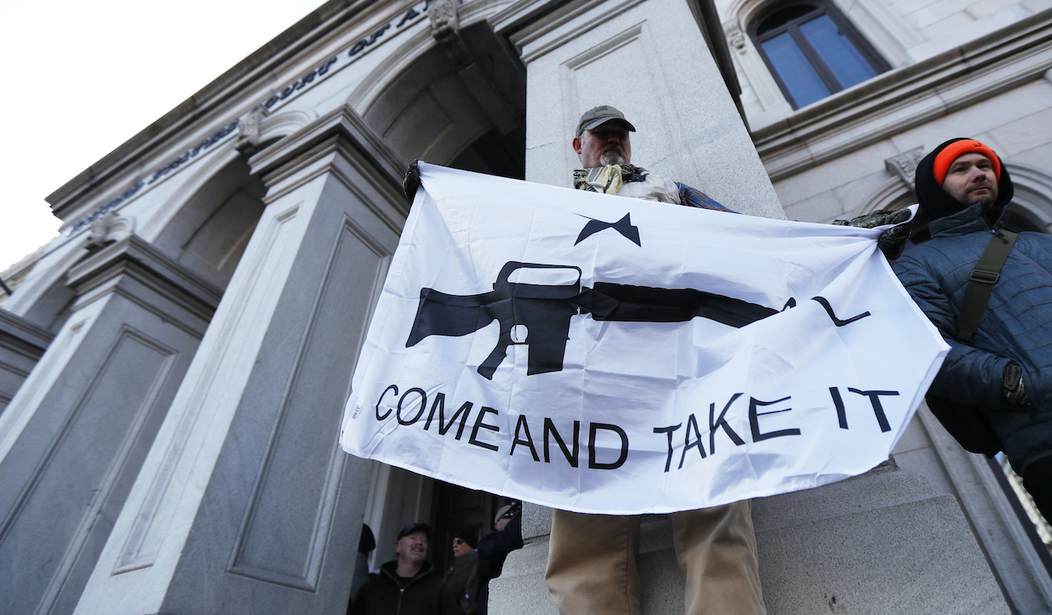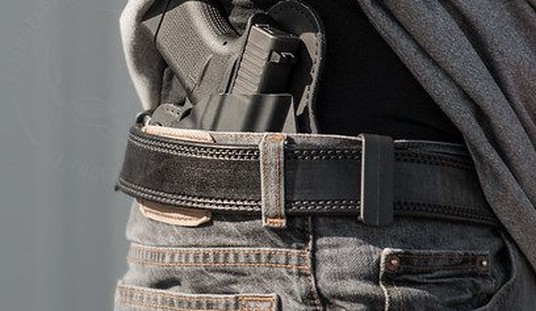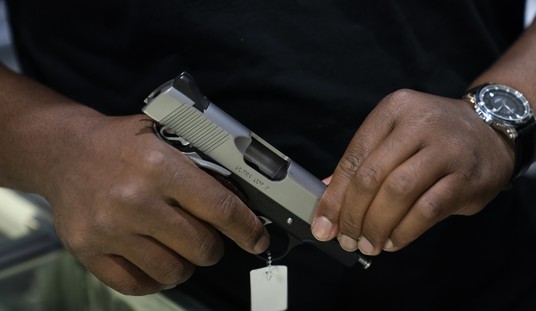The Supreme Court famously ruled in Tinker v. Des Moines in the 1960s that students, even minors, don’t lose their First Amendment rights when they set foot on a school campus, and more than a half-century later that case is at the heart of a new legal challenge; this time centered around a third-grade girl who wore a “Come and Take It” hat to school on Hat Day.
The lawsuit, filed on behalf of the little girl and her father by the Firearms Policy Coalition, argues that the school violated her First Amendment rights by preventing her from wearing the cap on campus of Robert Kerr Elementary School in Durant, Michigan back in February, on a day in which students were specifically “encouraged by the school” to wear hats. The student, referred to her by her initials C.S. in the lawsuit, chose a black cap with a white star, an AR-15, and the words “Come and Take It”; a common modern variant of the Gonzales flag.
C.S. understands the meaning of the inscription on the Hat and the importance of the inscription to the support of the right to keep and bear arms. C.S. supports the right to keep and bear arms and enjoys shooting sports. C.S. picked the Hat herself to wear to school on hat day.
I know some people will find it hard to believe that an eight year-old could truly be supportive of the Second Amendment, but I’ve met some pretty young junior shooters who seem to have a pretty good grasp of the issue. Can they argue their position with the eloquence of an Alan Gura or Antonin Scalia? Of course not, but so what? Most of us can’t do that either.
Anyway, according to the complaint, on the morning of February 17th C.S.’s dad got a call from the school’s “On Track Coach” (which I’m assuming is the politically correct title given to school counselors in this particular district) asking if he could bring another cap to school for his daughter. Dad declined, which led to a second call; this time from the school principal making the same request (albeit to father Adam Stroub’s voicemail). When C.S. came home from school that afternoon, she told her father that she had not been allowed to wear the hat, which led to an email exchange between Stroub, school principal Amy Leffel, and school superintendent Craig McCrumb.
Defendant Leffel said in her email, “The hat in question had a picture of an AR type weapon on the front of it. Weapons of any kind are not appropriate for students to wear in a school setting.”
Defendant Leffel also stated that Defendant McCrumb was present at the school “when I addressed this earlier today.” Defendant Leffel copied Defendant McCrumb on the email to Stroub.
The dress code at Kerr Elementary School provides, in pertinent part, “Anything printed on clothing must not be offensive in any way. The building principal/staff has the right to decide what is offensive, but some examples are: words/slogans that advertise illegal substances, words/slogans that are racially or religiously offensive, violence themes, vulgar or sexual innuendo, etc.”
The lawsuit argues that the hat in question “is not offensive and only portrays support for the right to keep and bear arms in a non-violent, non-threatening manner,” is pure speech, and therefore protected by the Second Amendment.
I’m not an attorney, and I have a great deal of respect for John Monroe, the Second Amendment activist and attorney who’s the counsel of record in this case, but is really true that the phrase “Come and Take It” expresses support for the right to keep and bear arms in a non-violent, non-threatening manner? I mean, when we use that phrase, don’t we really mean “if you want my arms you’re going to have to fight for them”? Even the complaint acknowledges the martial context to the statement.
The words, “Come and take them,” or a derivation thereof, are reputed to have been used by King Leonidas I (of Sparta) during the Battle Thermopylae (480 B.C.) in response to a demand by Xerxes (of Persia) for the Spartans to lay down their arms and surrender.
The Greek words “molon labe” from which the English translation “come and take them” was derived, were used by the I Army Corps of Greece and the Second Infantry Division of Cyprus during World War I.
The words “molon labe” are the sole inscription on a bronze statue of Leonidas erected at Thermopylae in 1955.
The words “come and take it” were used by American Col. John McIntosh on November 25, 1778, who was defending Ft. Morris, Georgia against a British attack, in response to a British demand for the surrender of the fort. The British declined to attempt to do so.
Texans created the “Gonzales flag” during the Texas Revolution after Mexico demanded that Texas return a small cannon that Mexico had previously supplied to the colony of Gonzales, Texas, for its defense.
The Gonzales flag features a single star (the Texas “lone star”), a drawing of the cannon, and the words, “Come and take it.”
The words “molon labe” are the motto of the United States Special Operations Command Central.
When the Texans refused the demand by Mexican Col. Domingo de Ugartechea to return the cannon, the colonel responded by sending 100 Mexican dragoons to the town to take it by force. The result was the Battle of Gonzales, which resulted in only one fatality amidst several hours of sporadic shooting from both sides. Still, all of the examples that Monroe uses to provide context to the phrase involve the threat of violence to prevent the disarming of soldiers or citizens. McIntosh didn’t try to settle his disagreement with the British through a rousing game of Thumb Wars. He was ready and willing to use arms instead.
If C.S.’s hat simply had the text of the Second Amendment on it, or even just an image of an AR-15, I think the argument that it represented pure speech would be an easier one to make. I don’t think the cap or its statement could be seen as a threat by the third grader, but I just have a hard time concluding that the phrase doesn’t at least infer a violent response to any attempt to disarm citizens. Most of us would consider that to be an act of righteous violence in defense of individual liberties and freedoms, to be sure, but it’s still violence nonetheless.
The real issue, though, isn’t whether or not “Come and Take It” implies violence. The problem with the hat, at least according to the school’s dress code, is that the school district believes it’s actually “offensive” speech, of which “violent themes” are only one subset. While the phrase “Come and Take It” may imply violence, I’d also argue the violence it’s referring to is defensive in nature and not “offensive” under either definition of the word. It also, as Monroe points out, has a rich historical context as well. If C.S. had worn a hat with the actual Gonzales flag on it instead of an AR variant of the flag, would it have triggered the same meltdown on the part of school officials? I guess we’ll never know, but I highly doubt it. The school principal’s email to C.S.’s dad make it pretty clear that her problem with the cap was the AR-15 on it. It was the “weapon” she complained about, not the text on the hat, and an image of a gun does not automatically imply violence.
I think this is a fascinating case, and I have absolutely idea how it will play out. Federal courts have seen it both ways in recent years. In 2021, a federal judge in Wisconsin threw out a lawsuit filed by two students after they were told they couldn’t wear a Smith & Wesson shirt and a Wisconsin Carry, Inc shirt (respectively) on campus. Two years prior, however, another federal judge in Wisconsin granted a preliminary injunction in a separate case involving a student who sued after his school first tried to bar him from wearing shirts with weapons on them despite not being covered in the school’s dress code , and then repeatedly changed the dress code; first to explicitly include weapons even in non-violent contexts, and eventually even banning the word “gun” from appearing on any student-worn item of clothing.
This case will hopefully add to the First Amendment protections already in place for students, and I’m rooting for C.S., her dad, John Monroe, and the FPC team on come out on top here. We’ll be keeping an eye on this case and let you know what the district has to say when they formally respond to the complaint in the U.S. District Court for Eastern Michigan.









